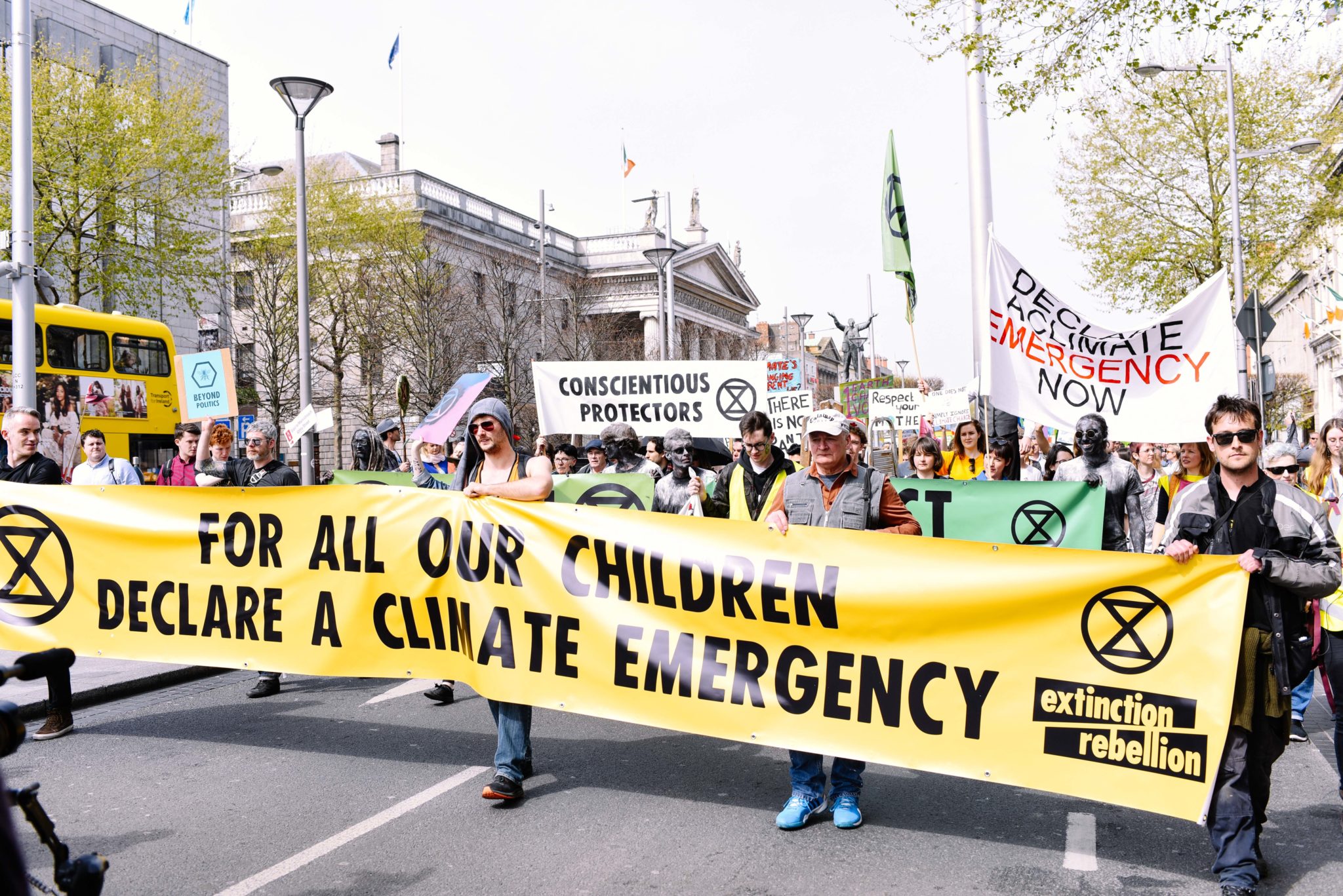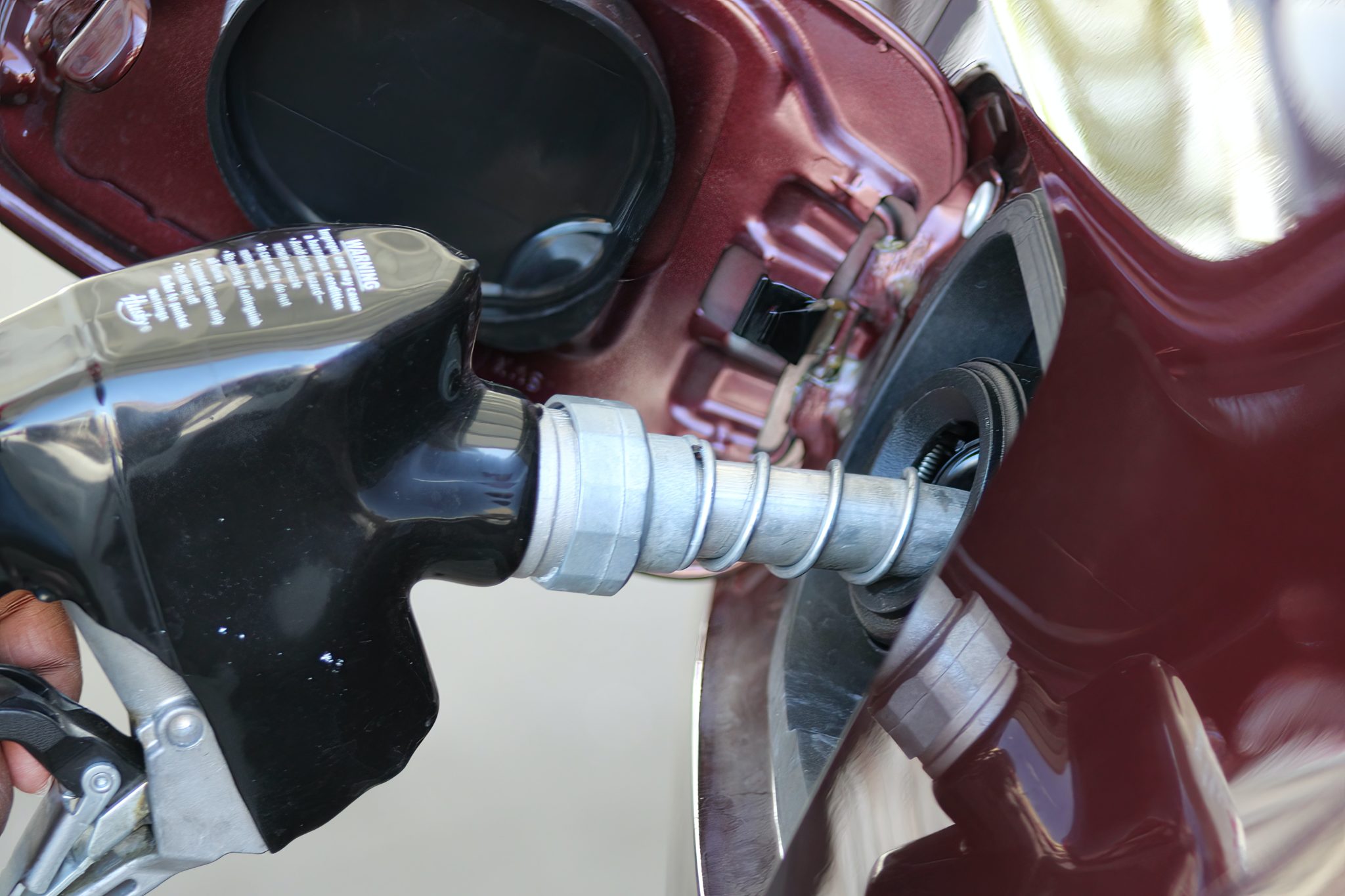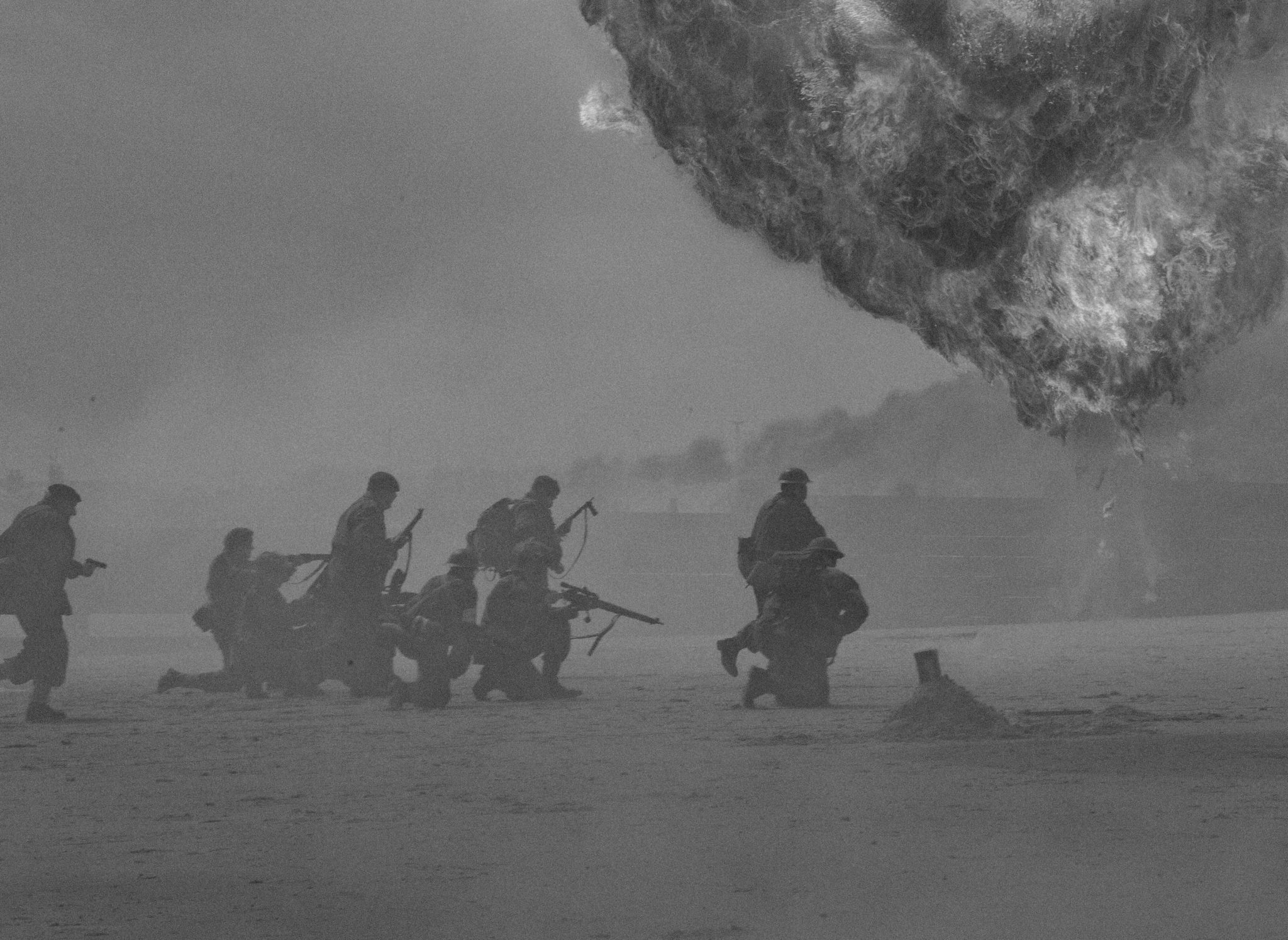- Culture
- 05 Jul 22
Cause for Climate Alarm: The Warning Signs

Hot Press on the key areas we need to tackle in the climate battle.
For countries outside of the West who have been battling the effects of climate breakdown for decades, despite creating the least amount of carbon emissions, listing out ‘alarming warning signs’ feels sadly futile.
“Climate change is now affecting every country on every continent,” as the UN states on its sustainable development site. “It is disrupting national economies and affecting lives, costing people, communities and countries dearly today and even more tomorrow. Weather patterns are changing, sea levels are rising, weather events are becoming more extreme, and greenhouse gas emissions are now at their highest levels in history.”
Earlier this spring, the International Panel on Climate Change (IPCC) released the third report from its sixth cycle of assessments, addressing how to mitigate the changing climate. The key takeaways were frightening, but the window remains open – though it’s rapidly closing – for action rather than words to take centre stage. We still could, in theory, keep global warming below 1.5 degrees Celsius, avoiding the most catastrophic impacts of a changing climate. Below, we list out the key knowledge points to arm yourself with, as you demand change from government leaders and corporations. Individual action won’t get us far enough.
 Extinction Rebellion rally at O Connells bridge, Dublin. Friday 19th of April 2019. Copyright Miguel Ruiz
Extinction Rebellion rally at O Connells bridge, Dublin. Friday 19th of April 2019. Copyright Miguel RuizDon’t Mistake This As A Future Problem
3.3 billion people (over 40% of the world’s population) currently live in places extremely vulnerable to climate breakdown. Driven by factors like geography, governance and socioeconomic status, the IPCC points towards the historical and ongoing patterns of inequity – such as colonialism – which still contribute to regions’ climate vulnerability. These countries still bear the scars of having their resources taken by other nations, which continues to this day. These countries have no capacity to adapt to change, as profits they could have had from those resources have been taken. Deaths from heat stress and air pollution are increasing, while food security and water shortages are rampant.
Climate resilience development is part of the answer: a merger of mitigation and adaptation with long-term actions. Urban greening; rewetting and rewilding; and restoration of ecosystems like wetlands, natural forests and peatlands, boost our ability to bounce back after disturbances like floods and extreme rainfall.
The 1.5 Degree Tipping Point
The IPCC report describes an “atlas of suffering”, with widespread devastation likely to ensue if we fail to tackle greenhouse gas emissions urgently. We would need to act swiftly, slashing emissions by nearly half by 2030 and 80 percent by 2040. If each country complies with its current commitments, called nationally determined contributions (NDCs), we’re way off this goal. We would need to act immediately even to limit warming to 2 C (3.6 F), a temperature rise that would have “catastrophic consequences” for the most vulnerable communities.
“The further climate change progresses,” UN experts told The Guardian in May, “the more we lock in a future featuring more ruined harvests, and more food insecurity, along with a host of other problems including rises in sea level, threats to water security, drought and desertification. Governments must act against climate change while also dealing with other pressing crises.”

Fossil Fuels
The world’s biggest fossil fuel firms are quietly planning scores of “carbon bomb” oil and gas projects, which would drive the climate past internationally agreed temperature limits with catastrophic global impacts, a Guardian investigation recently showed. The lure of colossal payouts in the years to come appears to be irresistible to oil companies, despite the world’s climate scientists stating in February that further delay in cutting fossil fuel use, would mean missing our last chance “to secure a liveable and sustainable future for all”. As the UN secretary general, António Guterres, warned world leaders in April: “Our addiction to fossil fuels is killing us.”
Accessible, Low-Carbon Solutions
According to the IPCC report, which is based on 34,000 studies documenting “widespread and pervasive” impacts, we must immediately decarbonise electricity (mostly by using more wind and solar) and electrify other sectors where possible. We should make maximum use of low-carbon solutions throughout the economy, including transportation, industrial processes, agriculture, and forests.
Decarbonisation is already cheaper than fossil fuels in many cases and often offers additional benefits beyond reduced greenhouse gas emissions, like cleaner air and water. To phase out fossil fuels entirely and create a robust, reliable, carbon-free electricity system, we’ll need storage, smart grids, more transmission lines, demand-side management, etc. The building of new LNG terminals worldwide (like Shannon LNG, which has been heavily criticised and protested against) would be disastrous. The transition to lower-carbon energy will also reduce local pollution.
Cost of living and the wealth gap
Deep into late stage capitalism, prices of food, rent and fuel have skyrocketed around the world. In order to incentivise a Just Transition, due compensation is needed from the government so it’s not just the elites adapting to retrofitted homes, insulation, solar power and electric cars. The whole of society needs to be on the journey, including groups who have been heavily alienated due to socioeconomic factors. Far from wages driving price increases, it is inflation that is rightly leading workers and their trade unions to demand pay hikes.
Resources we thought were a guarantee are already becoming “precious”, such as water. An emergency scheme has been announced by the Scottish Government to provide bottled water to households in the event that supplies run out this summer. Dry weather over winter and spring is posing a threat to crops, the whisky industry and hydro-electric energy schemes, and concerns are growing with each week.

Climate-driven warfare
The United Nations published its 2022 Global Assessment Report on Disaster Risk Reduction (GAR2022) in May, with the verdict that the world was experiencing an accelerating trend of natural disasters and economic crises. However, the biggest issue was largely ignored: the increasing probability of civilisational collapse. Buried in the report, which was endorsed by UN Secretary-General António Guterres, is the finding that escalating synergies between disasters, economic vulnerabilities and ecosystem failures are escalating the risk of a “global collapse” scenario.
For example, the impact of Russia’s genocide in Ukraine and ongoing war has already led to drought in the Horn of Africa. With many nations in Central America, Africa, South America and the Middle East already exploited for their national resources and materials like lithium, many countries are steadily facing increased societal collapse as the elites in the West scramble to hold onto capitalist power. Conflict between Russia and China is likely on the horizon as both nations look to utilise new shipping routes through previously frozen waters around Greenland, Iceland and the Arctic Circle, according to a March report from the Atlantic Council.
The US and Britain have reinforced their military and naval presence in the area. Research has also discovered that wars in Syria and Somalia have been worsened by the issue. The U.S. military is still contributing heavily to climate breakdown and its greenhouse gas emissions alone in 2017 were higher than that of Sweden. Food insecurity has forced millions of Somali people into overcrowded cities, refugee camps, or to the ranks of the jihadist group al-Shabab, the GroundTruth Project says.

Health and wellbeing
More than half of the disease burden in the world is climate sensitive, and a wide range of diseases, from vector-borne and zoonotic infections, water and food-borne diseases, injuries and a host of chronic noncommunicable diseases, are all affected. Smoke inhalation from fires has led to cardiovascular problems, while flooding has increased levels of cholera. Animal diseases are emerging in new areas (zoonotic diseases include Covid, bird flu and swine flu) due to heatwaves and flooding. Malaria has now been discovered in areas atypical of mosquitos to inhabit, and certain parasites can now survive in Ireland, such as mites attacking our trees.
Mental health issues have also skyrocketed due to trauma at experiencing the loss of homes, livelihoods and lost lives of loved ones. Anxiety and stress levels are rising, particularly for children, adolescents, elderly and people with disabilities or underlying conditions. Kids are seeing the damage older generations have caused with no power to act. The IPCC has stressed the need to improve access to mental health services, while health and wellbeing must be integrated into adaptation measures taken in our infrastructure and food sector.
“Nearly all mitigation options have benefits for health,” Professor Kristie Ebi of the IPCC said.
“Benefits for our health arise from reducing exposure to harmful air pollutants from emissions from point sources like coal-fired power plants, reducing transportation that relies on internal combustion engines and increasing walking and biking, and changing dietary patterns to eat healthier diets. The economic value of avoiding hospitalisations and premature deaths is of the same order of magnitude.”

Inequality
“Our assessment shows that tackling all these different challenges involves everyone – governments, the private sector, civil society – working together to prioritise risk reduction, as well as equity and justice in decision-making,” said IPCC Working Group II Co-Chair Debra Roberts. “Different interests, values and worldviews can be reconciled. By bringing together scientific and technological know-how as well as Indigenous and local knowledge, solutions will be more effective.”
Creating climate adaptation solutions that exclude parts of the population only injure the cause. For example, the Irish government has been warned this week that its housing retrofitting scheme faces failure as owners of the most inefficient homes are unable to afford the spiralling building costs. In a damning new report on the scheme, Friends of the Earth said a large cross-section of society, including low-income households, tenants, rural dwellers, and the Traveller community, face significant barriers to retrofitting.
Biodiversity
Globally, only 15% of land, 21% of freshwater and 8% of the oceans are in protected areas of the world. Sustainable economic development has to include protection for biodiversity and natural ecosystems, which secure resources like fresh water and coastlines to help shield against extreme weather.
Maintaining the resilience of biodiversity and ecosystem as the climate warms, will depend on the effective and equitable conservation of approximately 30-50 percent of the earth’s land, freshwater and ocean areas. If we surpass the 1.5 degree tipping point, forests and Arctic perma-frost zones which act as carbon dioxide stores will heat, leading to huge amounts of carbon and methane being released. This aggravates and accelerates a self perpetuating cycle of global warming.

For example, since the enormous levels of deforestation and forest fires began, the Amazon is fast approaching a tipping point which would trigger huge dieback of the entire rainforest, killing off the ‘lungs of the planet’. This would create a Savannah-type ecosystem, releasing terrifying amounts of carbon.
Ireland’s role
Ireland’s temperature has increased by 1 degree since pre-industrial levels, with more flooding and extreme rainfall expected in future in the west and increasing drought problems in the east. According to Ireland’s Climate Change Advisory Council, set up following the 2019 Climate Action Plan, “more focus on implementation and adaptation is needed”. We missed our emissions reduction targets and have no reduction strategy. In essence: lots of plans but no action. Examining 12 key sectors of the economy, only the flood risk management sector and water quality sector were making progress. Our advisory body made stark warnings but the State’s pace doesn’t match our ambitions yet.
Senior EPA officials described Ireland’s greenhouse gas emissions projections as “very bad”. In Ireland, the Agriculture sector was directly responsible for 37.1% of national Greenhouse Gases (GHGs) emissions in 2020, mainly methane from livestock, and nitrous oxide due to the use of nitrogen fertiliser and manure. There is a huge gap between the ambitions of Ireland’s Climate Act, which targets a 51% cut in emissions by 2030, and the actions needed to deliver on that ambition. Even in the unlikely event that every planned climate policy and measure outlined in the Climate Action Plan were fully implemented on time, Ireland’s greenhouse gas emissions would only fall by 28% by 2030 – a little over half what is legally required.
 Minister for the Environment, Climate and Communications and Transport, Eamon Ryan. Copyright Miguel Ruiz.
Minister for the Environment, Climate and Communications and Transport, Eamon Ryan. Copyright Miguel Ruiz.The Government’s carbon budgets – the major new policy instrument for enforcing climate action on all sectors – already look to be in deep trouble. The report says that if everything in the plan was implemented, emissions for the five years to 2025 would still exceed the carbon budget by 40 million tonnes.
EPA Senior Manager Stephen Treacy said: “In Ireland, implementation of measures has consistently lagged far behind planning.”
Doom and gloom will get us nowhere. There’s a global movement of young people protesting for their future on a weekly basis: a liveable and sustainable future is still within our grasp, if we can hold those in power accountable.
READ: 10 Reasons To Be Cheerful About Ireland's Sustainability
RELATED

- Culture
- 24 Dec 25
The Best Books of 2025

- Culture
- 22 Dec 25
Tributes paid to Chris Rea

- Culture
- 22 Dec 25







